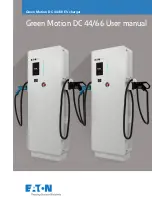
DRIVE (D):
This position is for normal driving.
It provides the best fuel economy for your vehicle.
If you need more power for passing, and you are:
•
Going less than 35 mph (55 km/h), push your
accelerator pedal about halfway down.
•
Going about 35 mph (55 km/h) or more, push
the accelerator all the way down.
You will shift down to the next gear and have
more power.
Downshifting the transaxle in slippery road
conditions could result in skidding, see “Skidding”
under
Loss of Control on page 315
.
Notice:
If your vehicle seems to start up
rather slowly or not shift gears when you go
faster, and you continue to drive your vehicle
that way, you could damage the transaxle.
Have your vehicle serviced right away. You can
drive in SECOND (2) when you are driving
less than 35 mph (55 km/h) and DRIVE (D) for
higher speeds until then.
Warm-Up Shift
Your vehicle has a computer controlled transaxle
designed to warm up the engine faster when
the outside temperature is 35°F (2°C) or colder.
You may notice that the transaxle will shift at
a higher vehicle speed until the engine is warmed
up. This is a normal condition designed to
provide heat to the passenger compartment and
defrost the windows more quickly.
THIRD (3):
This position is also used for normal
driving. It reduces vehicle speed more than
DRIVE (D) without using your brakes. You might
choose THIRD (3) instead of DRIVE (D) when
driving on hilly, winding roads, when towing
a trailer, so there is less shifting between gears
and when going down a steep hill.
SECOND (2):
This position reduces vehicle speed
more than DRIVE (D) without using your brakes.
You can use SECOND (2) on hills. It can help
control your speed as you go down steep mountain
roads, but then you would also want to use your
brakes off and on.
134
Summary of Contents for 2007 Rendezvous
Page 6: ...These are some examples of symbols that may be found on the vehicle 6 ...
Page 32: ...Put someone on it Get it up to speed Then stop the vehicle The rider does not stop 32 ...
Page 106: ... NOTES 106 ...
Page 170: ... NOTES 170 ...
Page 173: ... NOTES 173 ...
Page 174: ...Instrument Panel Overview 174 ...
Page 300: ... NOTES 300 ...
Page 364: ...Engine Compartment Overview When you lift the hood this is what you see 364 ...
Page 470: ... NOTES 470 ...
Page 487: ...Engine Drive Belt Routing 3 5L V6 Engine 487 ...
Page 512: ... NOTES 512 ...
















































